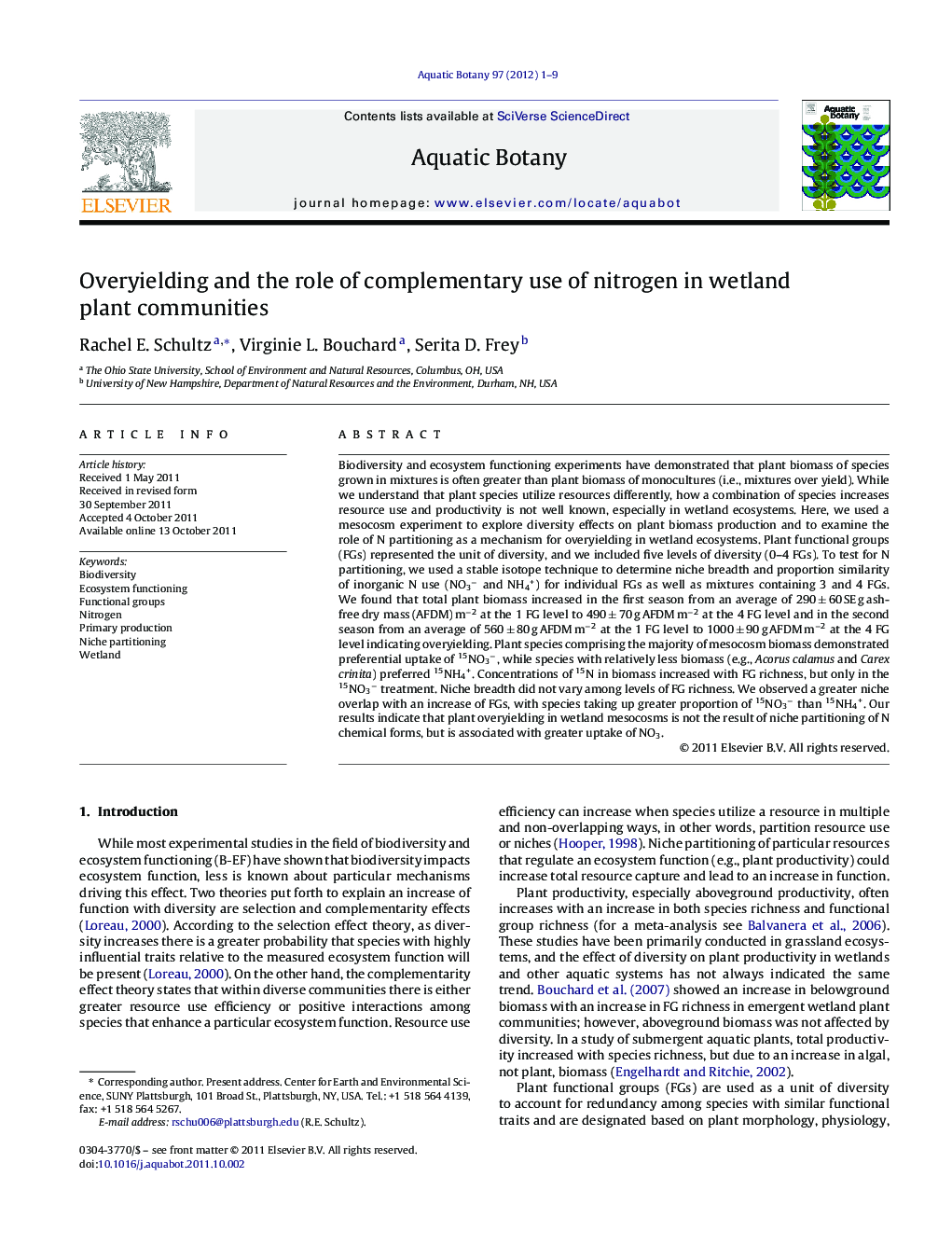| کد مقاله | کد نشریه | سال انتشار | مقاله انگلیسی | نسخه تمام متن |
|---|---|---|---|---|
| 4528055 | 1324280 | 2012 | 9 صفحه PDF | دانلود رایگان |

Biodiversity and ecosystem functioning experiments have demonstrated that plant biomass of species grown in mixtures is often greater than plant biomass of monocultures (i.e., mixtures over yield). While we understand that plant species utilize resources differently, how a combination of species increases resource use and productivity is not well known, especially in wetland ecosystems. Here, we used a mesocosm experiment to explore diversity effects on plant biomass production and to examine the role of N partitioning as a mechanism for overyielding in wetland ecosystems. Plant functional groups (FGs) represented the unit of diversity, and we included five levels of diversity (0–4 FGs). To test for N partitioning, we used a stable isotope technique to determine niche breadth and proportion similarity of inorganic N use (NO3− and NH4+) for individual FGs as well as mixtures containing 3 and 4 FGs. We found that total plant biomass increased in the first season from an average of 290 ± 60 SE g ash-free dry mass (AFDM) m−2 at the 1 FG level to 490 ± 70 g AFDM m−2 at the 4 FG level and in the second season from an average of 560 ± 80 g AFDM m−2 at the 1 FG level to 1000 ± 90 g AFDM m−2 at the 4 FG level indicating overyielding. Plant species comprising the majority of mesocosm biomass demonstrated preferential uptake of 15NO3−, while species with relatively less biomass (e.g., Acorus calamus and Carex crinita) preferred 15NH4+. Concentrations of 15N in biomass increased with FG richness, but only in the 15NO3− treatment. Niche breadth did not vary among levels of FG richness. We observed a greater niche overlap with an increase of FGs, with species taking up greater proportion of 15NO3− than 15NH4+. Our results indicate that plant overyielding in wetland mesocosms is not the result of niche partitioning of N chemical forms, but is associated with greater uptake of NO3.
► Resource partitioning of nitrogen as a mechanism for plant biomass overyielding.
► Functional group diversity manipulated in emergent wetland mesocosms.
► Mixtures of functional groups overyielded both above- and belowground.
► Partitioning of inorganic nitrogen did not increase with functional group richness.
► Nitrate uptake increased in functional group mixtures likely due to facilitation.
Journal: Aquatic Botany - Volume 97, Issue 1, February 2012, Pages 1–9